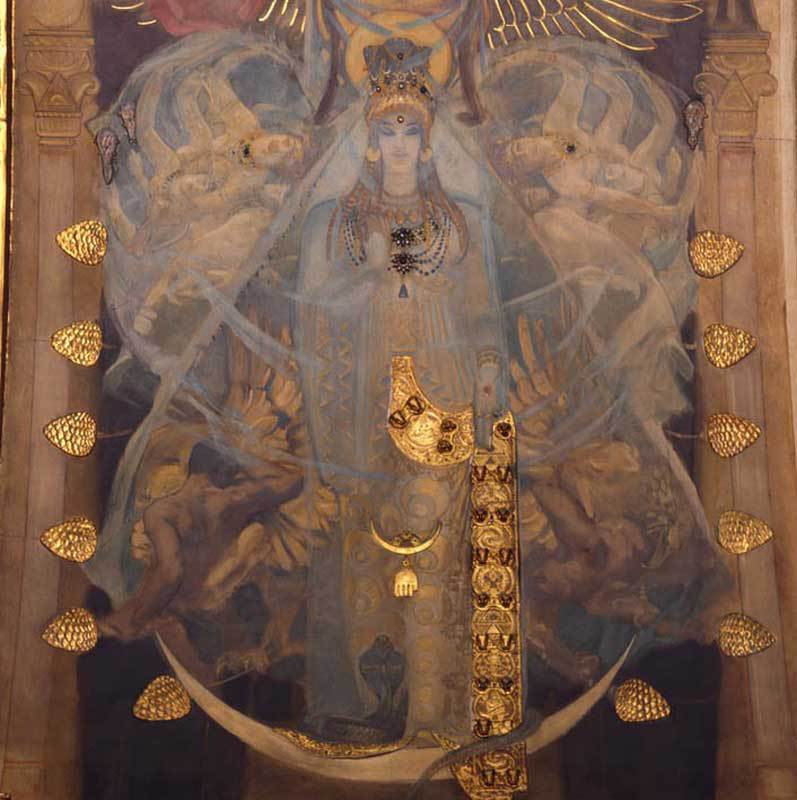⚜Asherah, the wife of God, was edited and censored outside the Bible⚜
THE MOTHER GODDESS, COUPLE OF YAHVEH, HAS BEEN EXCLUDED FROM THE BIBLE, BEFORE THE CONSTRUCTION OF A PARADIGM OF MALE HEGEMONY, AS A RESEARCHER REVEALS; ASHERAH, IS THE ETERNAL ASTARTE, ISHTAR, GODDESS OF THE SEA, OF HEAVEN AND SYMBOL OF THE TREE OF LIFE
Before the patriarchal monotheism established by the Judeo-Christianity in the West that has formatted our consciousness towards the enhancement of the masculine values of conquest, expansion and exploitation of naturelaza - leaving aside the feeling, the emotions, the intuition - it is possible that a religious conception of the divinity as a couple, the Mother Goddess and the Father God.
Information presented by the researcher of the University of Exeter, Francesca Stavrakopoulos, points out that originally the great Abrahamic religions - which are today the three great monotheisms - also worshiped the goddess Asherah, together with Yahweh (Asherah is sometimes called Astarot, and it is the same deity worshiped as Ishtar by the Babylonians and Astarte by the Greeks, archetype of the feminine divine: Moon, Earth Venus).
Stavrakopoulous based his theory on ancient texts, amulets and figures found in the city of Ugarit, today Syria, in which it is revealed that Asherah was a powerful goddess of fertility who was worshiped along with Yahweh or Jéhovah.
In a 13th century vase found in the Sinai desert, in Kuntillet Arjud, a blessing is requested from the divine couple. "And now several similar inscriptions have been found, all of which strengthen the case that the God of the Bible had a wife," says the scholar.
Also significant is the biblical admission that Asherah was worshiped in the temple of Yahweh in Jerusalem and in the Book of Kings it is said that a statute of Asherah lay in the temple and that female staff wove ritual vestments for it.

In the Book of Jeremiah there is a possible reference to this goddess when talking about "The Queen of Heaven".
Sometimes its name translates as the goddess of the tree of life, but it is also linked to the sea in one of its names Athirat, rbt'aṯrt and m, rabat'Aṯirat yammi, Lady of the Sea or She who walks on the sea.
His other epithet in the Ugaritic texts (a Semitic language) is "qaniyatu'ilhm", "the creator of the gods" (Elohim).
In those texts Athirat is the consort of the God El; there is a reference to the 70 sons of Athirat, presumably the same 70 sons of El. He is also called Elat, the female counterpart of El, in the Akkadian texts he appears as Ashratum, the wife of Anu, the god of heaven.
J. Edward Wright of the Arizona Center for Judaic Studies says that "Asherah was not fully edited from the Bible by its male editors, traces of it remain and archaeological evidence and references in texts of nations in the borders of Israel allow to reconstruct their role in the religions of the Levant. "
Other references to this goddess in the Bible derive from the book of Deuteronomy, in a frame always hostile. King Manasseh is judged as one who did evil before God when he placed the post, symbol of the Asherah tree (the ash tree of the druids, axis mundi?), In the Temple. King Hezekiah, who removed the symbol of Asherah from the Temple and holy places, was praised as the most righteous of the kings. The prophets Isaiah, Jeremiah and Micah also condemn the idolatry of Asherah, since according to them he distances himself from the worship of the one true god. This gives us an idea of how the female goddess, of the tree of life, of the sea and of the sky, was equated with false idolatry, with Baal, and the man was moved away from the worship of the divine couple and the woman, probably in subsequent editions of the Bible, edited by men who perhaps more than being faithful to sacred scripture and historical documents, they did an intelligence operation and a neurolinguistic programming of society, destined to keep the male priestly caste in power, repressing the feminine pole of divinity.
Source: http://misteriodesconocido.org